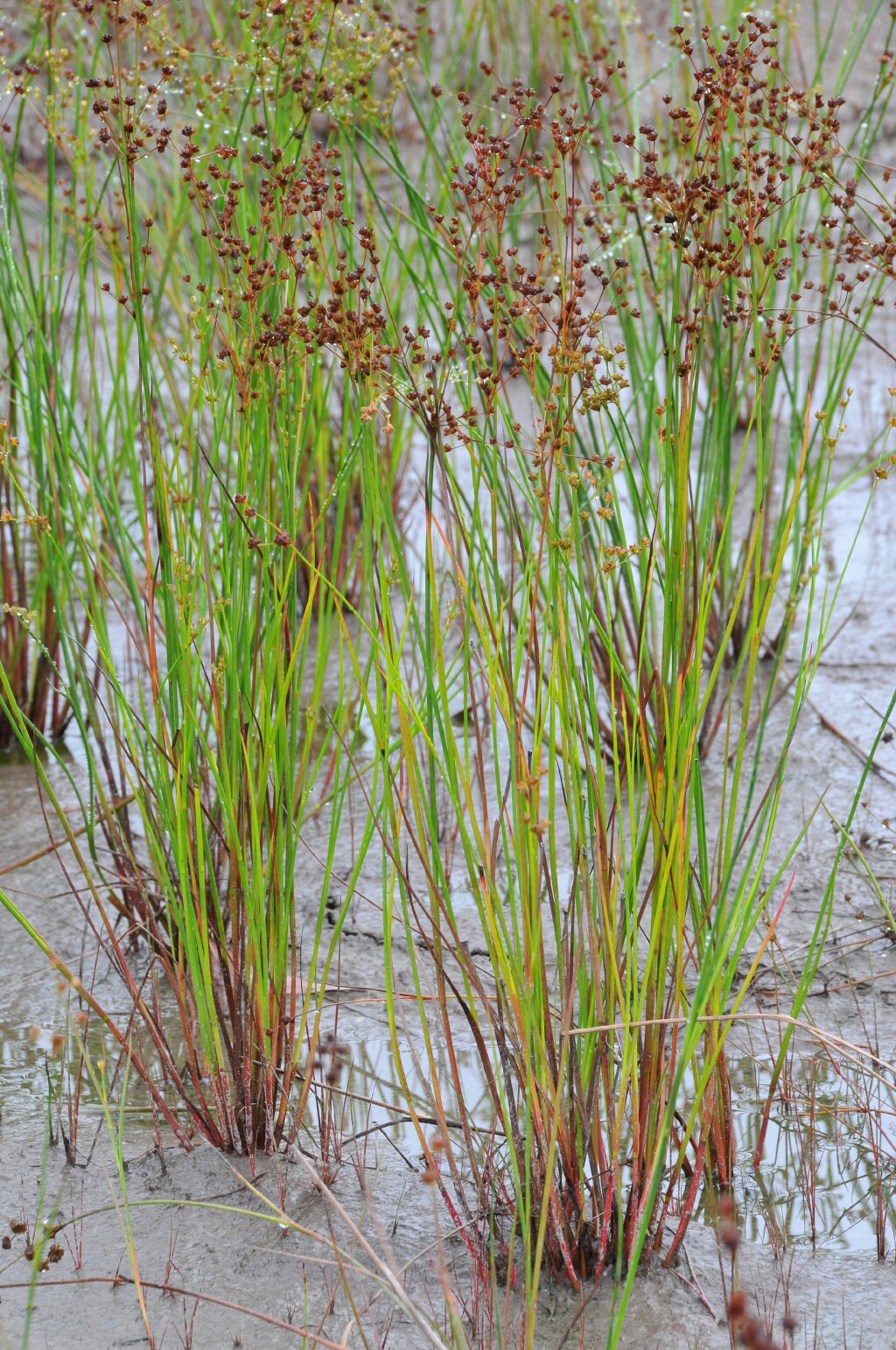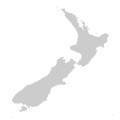Juncus acuminatus
Michx.Tufted, sometimes shortly rhizomatous perennial. Culms erect, 30–85 cm high, transversely septate just below the inflorescence. Leaves cauline and basal; blade hollow, with ± conspicuous transverse septa, very rarely exceeding the culms, compressed or terete, c. 1–3 mm wide, apex acute or obtuse; auricles usually obtuse, to c. 3 mm long. Inflorescence of 5–70(–100) usually discrete clusters, each with 4–20 (rarely more) flowers, 5–8 mm wide in fruit; primary bract shorter than inflorescence; prophylls absent. Tepal midrib green, turning light brown, margins pale, membranous, the ± curved tips often tinged reddish-brown; outer tepals (2.5–)2.8–3.5 mm long, acuminate; inner shorter or sub-equal to outer, acuminate. Stamens 3, anthers 0.5–0.7 mm long. Capsules light brown to red-brown, slightly 3-angled in the upper half at maturity, narrowly ovoid, c. 2.5–3.5 mm long, shorter than or subequal to tepals, tapering to a broadly acute and shortly mucronate tip; seeds c. 0.3–0.4 mm long, slightly asymmetrical, very fine longitudinal and transverse ridges discernible at moderately high magnification, minutely apiculate at each end. Flowers recorded Jan., fruiting period unknown.
MuM, VVP, VRiv, MuF, GipP, NIS, EGU, HSF, HNF, MonT. Also naturalised in NSW, Tas. Native to North and South America. Naturalised in New Zealand. Known in Victoria from a few recent (1980-2011) collections in the Walwa, Tubbut, Lake Nagambie, and Tonimbuk areas.
Similar to Juncus holoschoenus, but differs in its smaller seeds, fewer stamens and generally smaller fruit clusters.
Albrecht, D.E. (1994). Juncus. In: Walsh, N.G.; Entwisle, T.J., Flora of Victoria Vol. 2, Ferns and Allied Plants, Conifers and Monocotyledons, pp. 197–233. Inkata Press, Melbourne.
 Spinning
Spinning

